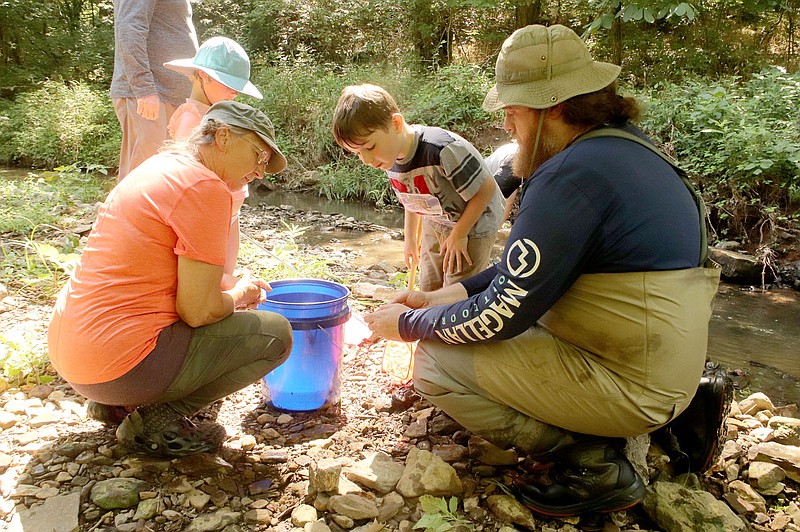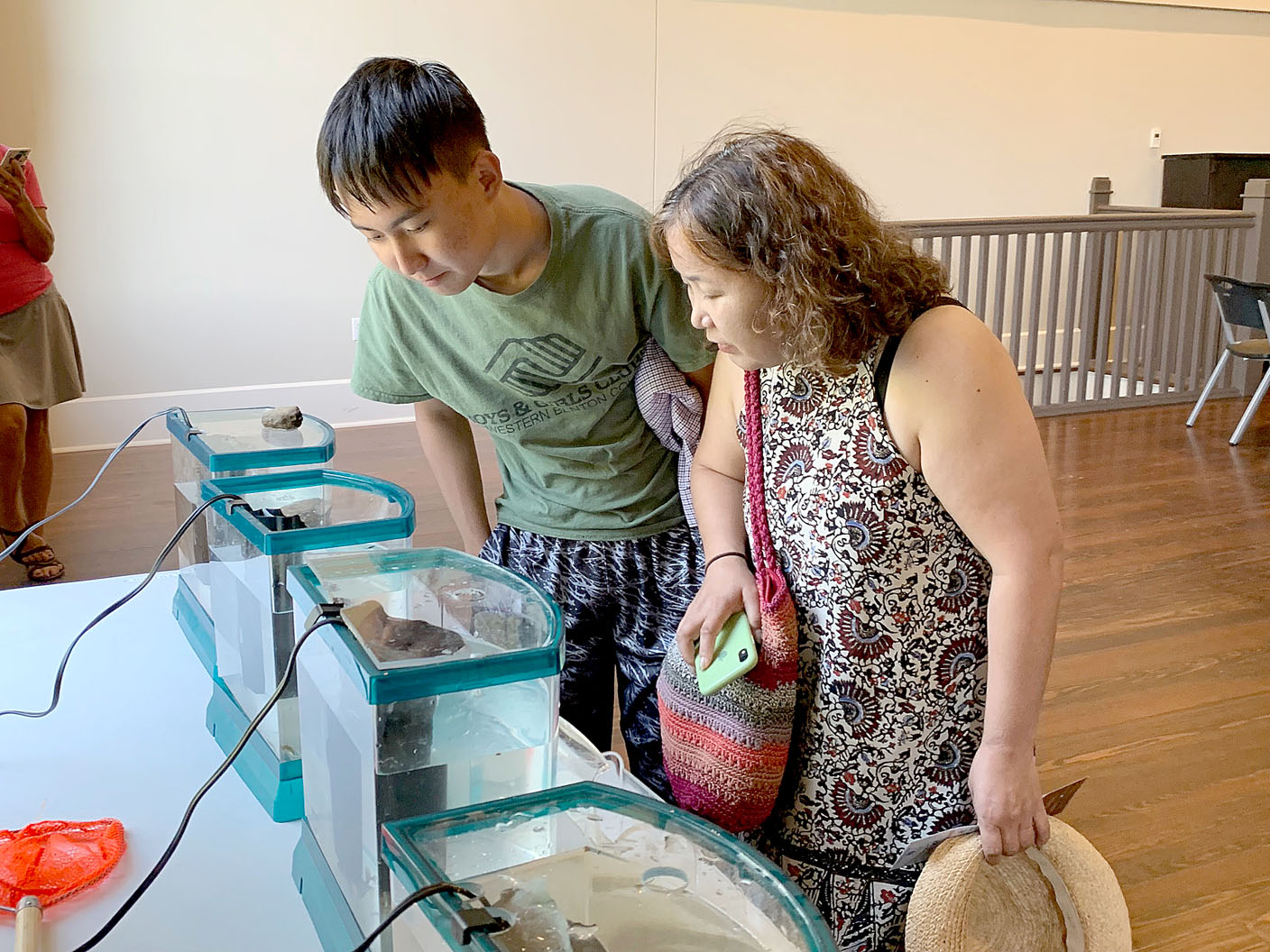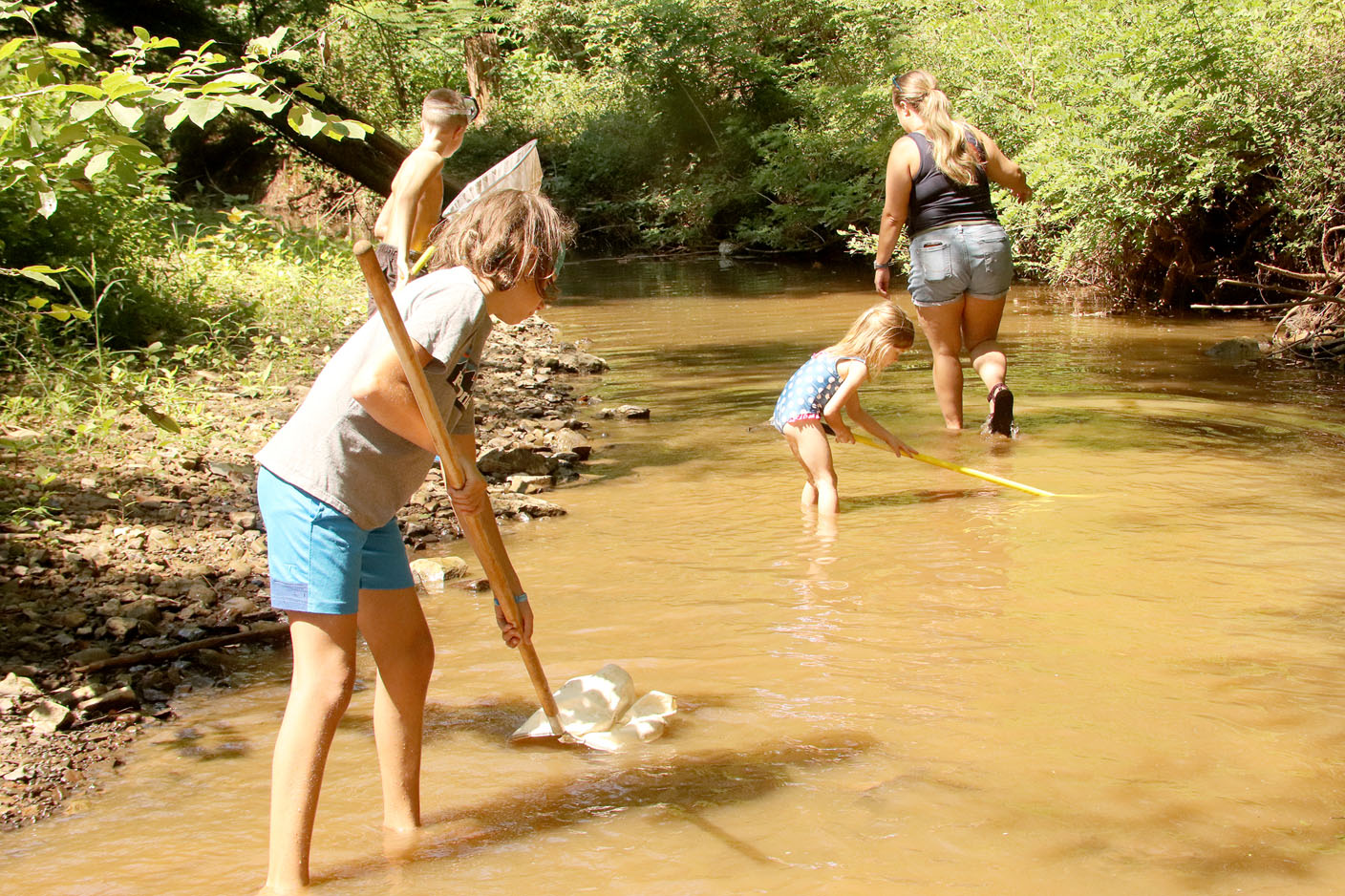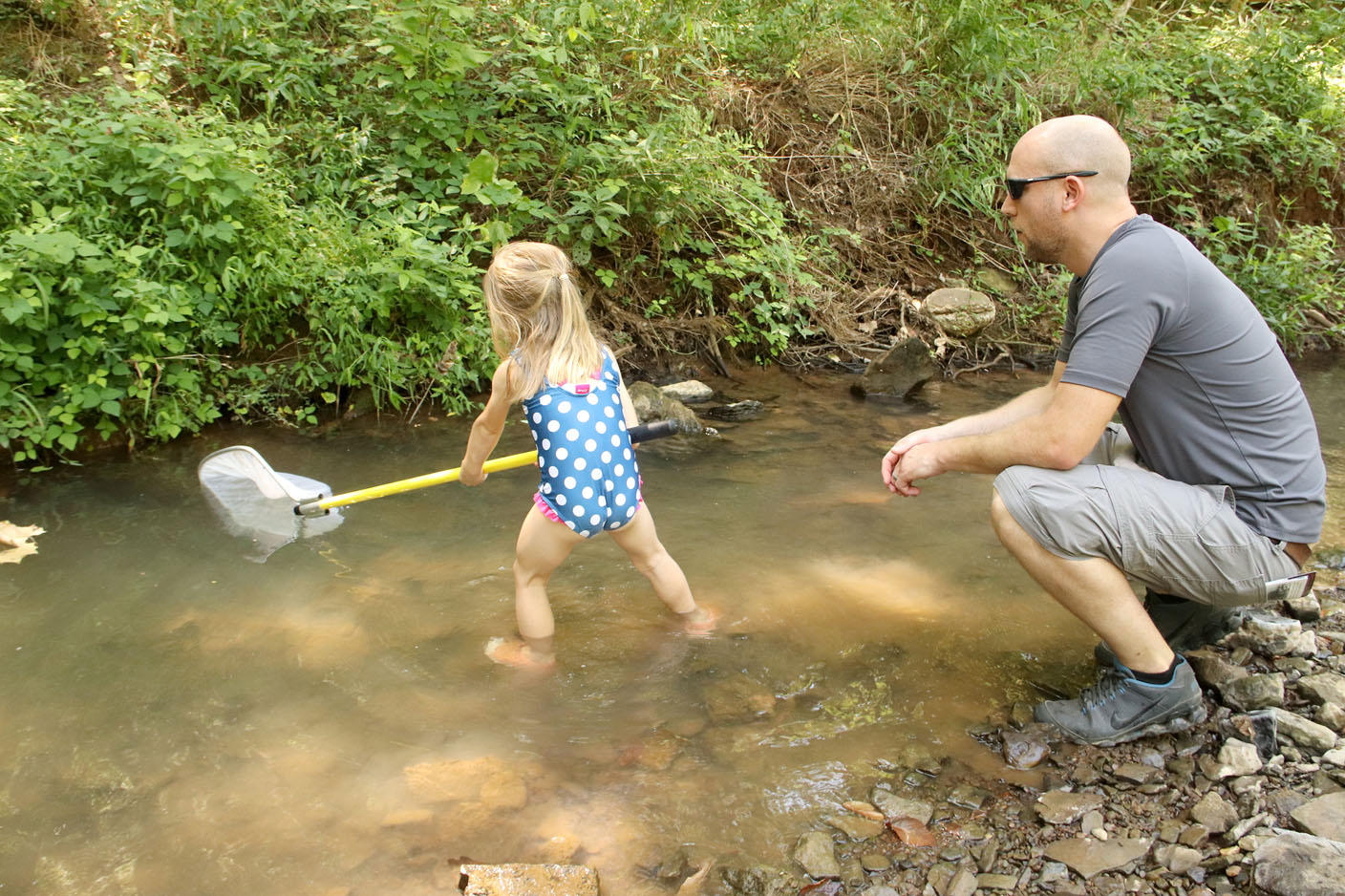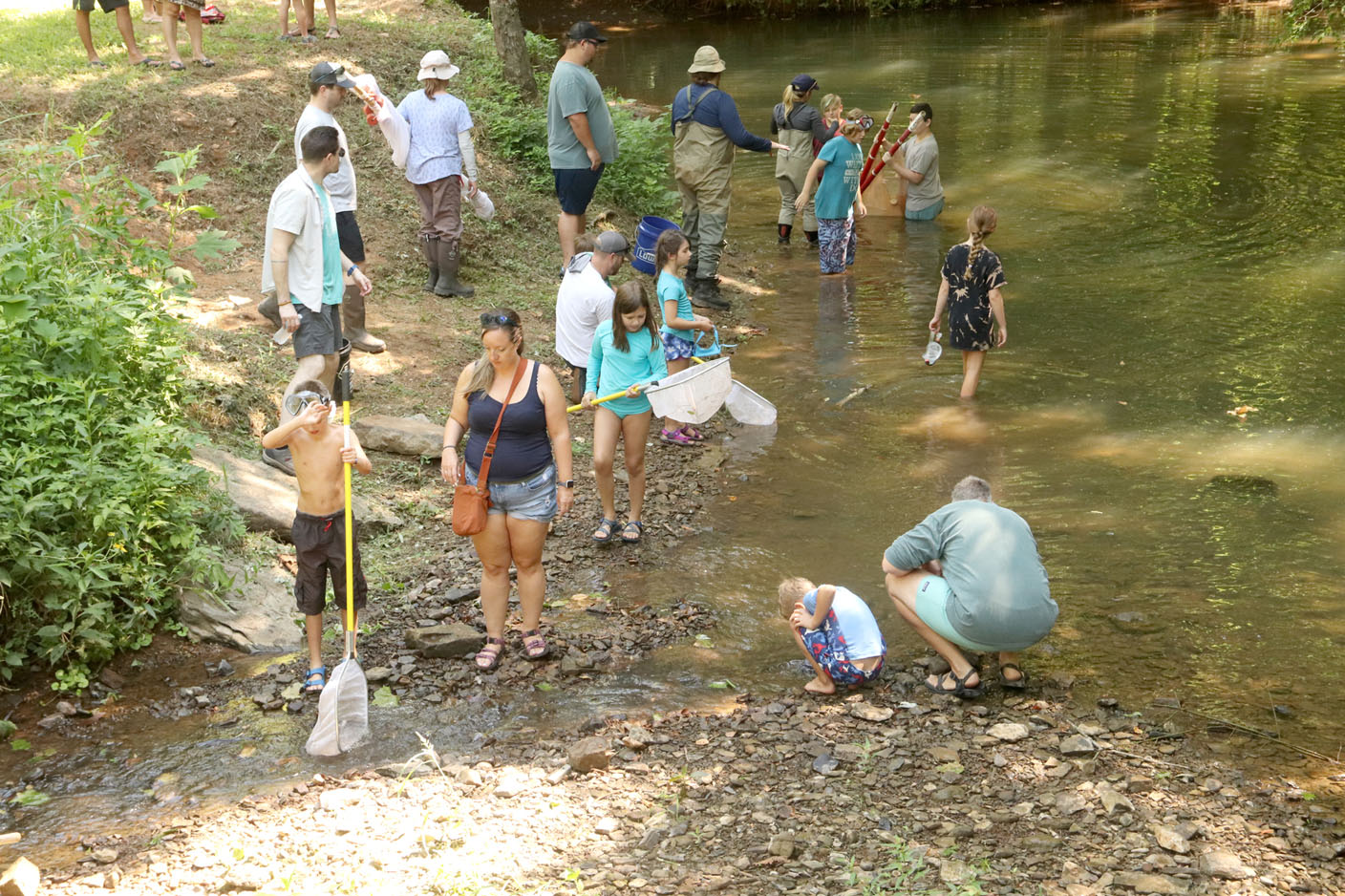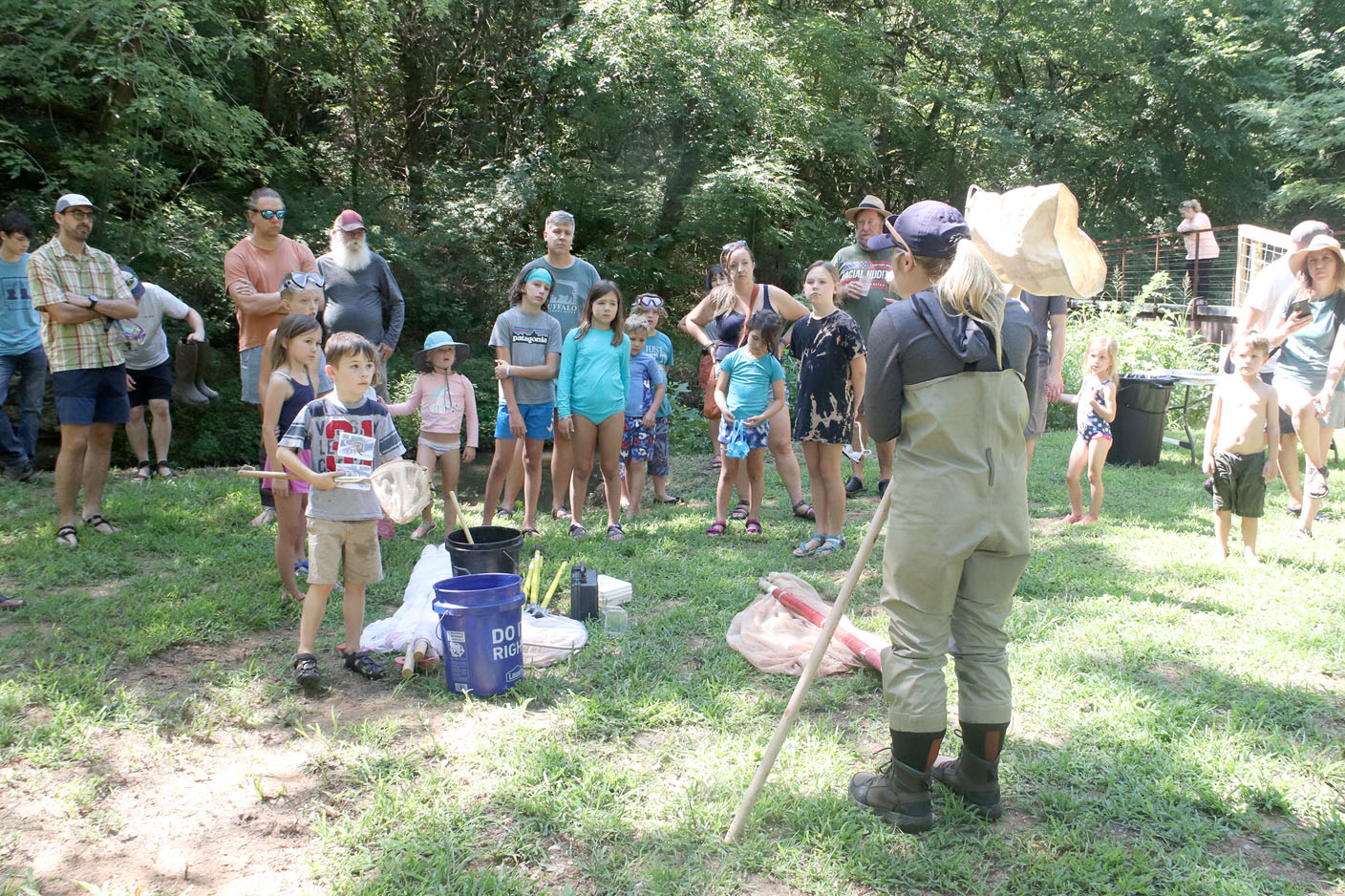CANE HILL -- Lots of families and couples, representing people of all ages, recently turned out for a program called "Creek Creatures" at Historic Cane Hill.
Dustin Lynch, an aquatic ecologist with the Arkansas Natural Heritage Commission, led the program about life in a stream in the Ozarks on Aug. 13.
The program started with a presentation in the auditorium at Historic Cane Hill College, and then everyone walked through Cane Hill and across state Arkansas 45 to try using nets to catch creatures out of Jordan Creek.
Fish, crayfish (or crawdads) and aquatic insects are some of the creatures that can be found in a typical Ozark stream, Lynch said.
Lynch and two volunteers had already scooped up many creatures from Jordan Creek, and these were on display in aquariums for the participants to see at the program. One tank had a baby water snake, and another tank had two green fish. A third tank had different aquatic insects, and a fourth tank had crayfish.
Lynch said the mission of the Natural Heritage Commission is to preserve the natural diversity of Arkansas for future generations. This includes plant and animal species and their communities. As an aquatic ecologist, Lynch said he studies the relationships between aquatic creatures and their environments. He looks for new populations of species and monitors known populations.
Arkansas is divided into eco-regions, and Cane Hill sits on the line between the Ozarks Highlands and the Boston Mountains. The watershed in Cane Hill is the Jordan Creek which is a tributary of the Baron Fork -- a tributary of the Illinois River. From there, the Illinois River travels about 40 miles to the Arkansas River and then flows into the Mississippi River.
Lynch said Arkansas has 240 native species of fish and new species are still being discovered. His program showed photos of many fish species in Arkansas streams.
"When I think of little fish in a creek like this, I think of minnows," Lynch said.
Arkansas has many species of minnows in varying sizes and some have beautiful colors, he added. His personal favorite fish are darters, and the colors of these can be stunning, Lynch said.
Arkansas has 60 species of crayfish and is one of the most diverse states in the country when it comes to crayfish, according to Lynch. Of these species, 15 are only found in Arkansas, and the Jefferson County crayfish is only found in one ditch in Arkansas, Lynch said.
Habitats for crayfish are swamps, creeks, ditches, streams and rivers.
Lynch's presentation also included information about aquatic insects and he noted that the more insects in a stream the healthier the water. Jordan Creek, for instance, had a lot of aquatic insects, he said. Many insects spend up to a year as a larva and then only days or weeks as an adult.
Vanessa McKuin, executive director of Historic Cane Hill, said the Creek Creatures program came out of the ongoing outdoor exhibit at Cane Hill called Habitat. This exhibit is made possible through the Smithsonian Institution Traveling Exhibition Services.
Habitat is free to the public and will run through Nov. 26. Trails and and self-guided exhibits are open daily from sunrise to sunset.
Habitat has 40 graphic panels that are set out along Historic Cane Hill's three-mile trails system or in other parts of the Cane Hill community. It has 12 outdoor exhibits and five exhibits in the Visitor Center.
As part of Habitat, Historic Cane Hill wants to have programs to highlight the natural habitat in the area, McKuin said.
She said Historic Cane Hill wants to get people outside to enjoy the beautiful habitat surrounding the small community and Creek Creatures was hosted as another way to invite participants to do this.
"We want to educate people about the place we live in and foster interest and appreciation of Jordan Creek," McKuin said.
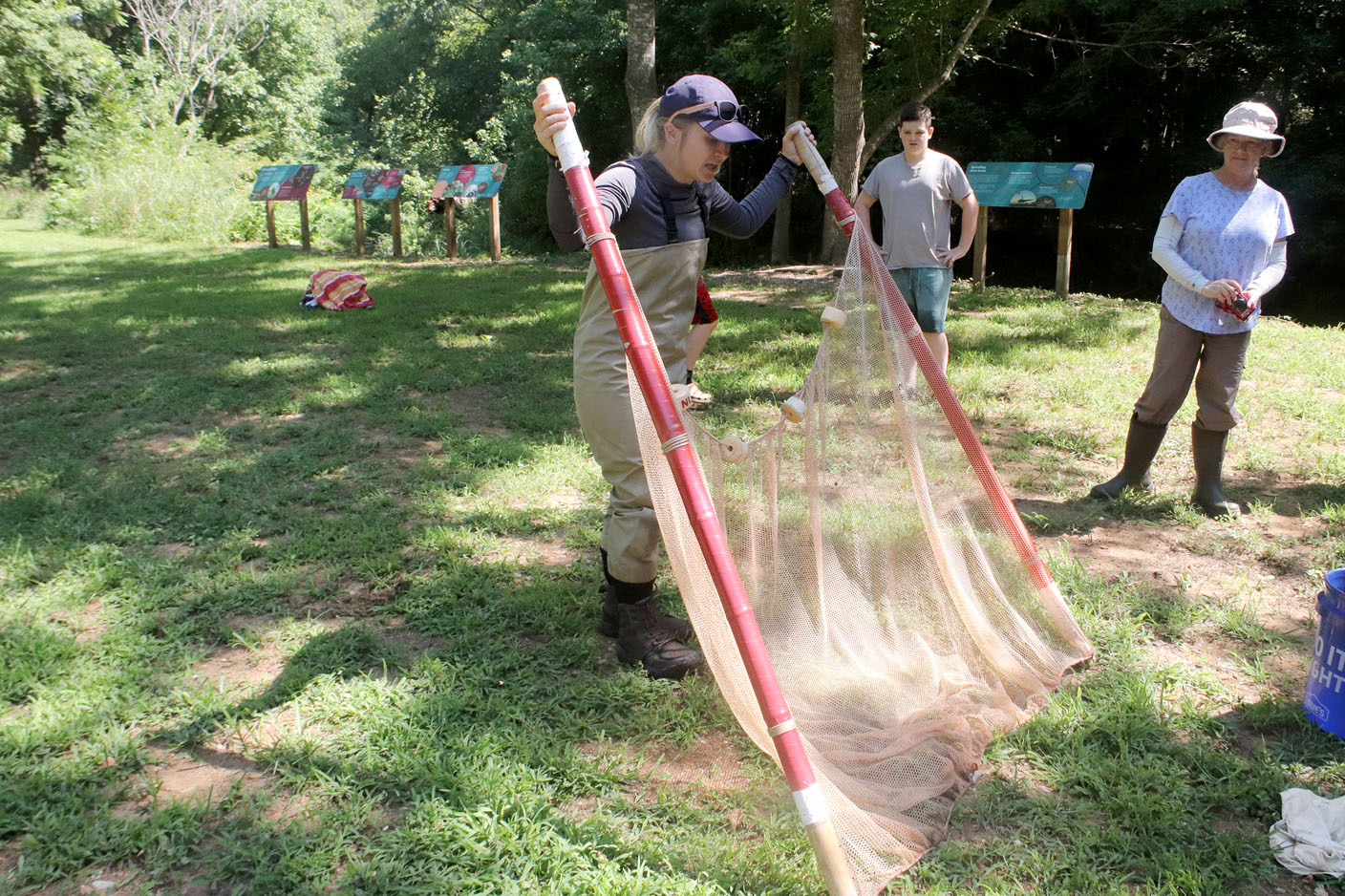 Brie Olsen with the Arkansas Department of Environmental Quality demonstrates a seine net, a type of net used to capture creatures in a creek or stream, Aug. 13 during an event at Historic Cane Hill. The net has weights at the bottom to keep it along the bottom of the creek. (NWA Democrat-Gazette/Lynn Kutter)
Brie Olsen with the Arkansas Department of Environmental Quality demonstrates a seine net, a type of net used to capture creatures in a creek or stream, Aug. 13 during an event at Historic Cane Hill. The net has weights at the bottom to keep it along the bottom of the creek. (NWA Democrat-Gazette/Lynn Kutter)
